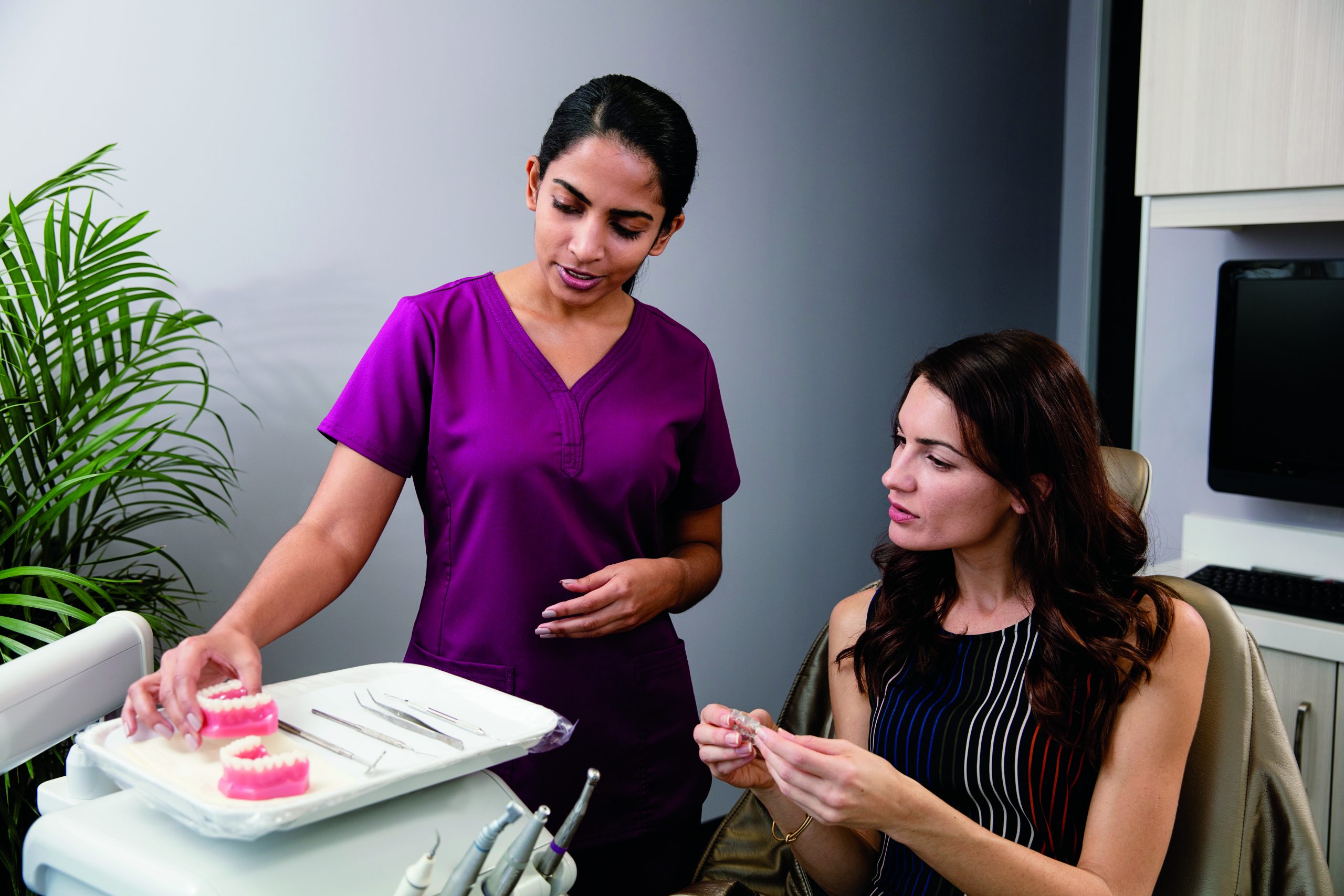
1What do orthodontists do?
Orthodontists are dental specialists who diagnose and treat problems with the position, alignment or spacing of the teeth, and related irregularities in the face and the jaw. We use a variety of special treatments, including braces and other oral appliances, to correct these problems.
2Why should I (or my loved ones) get orthodontic treatment?
There are two good reasons: aesthetics and function. Having an attractive smile not only changes the way people see you — it enhances your own self-image as well. Orthodontic treatment also allows your teeth to function better and makes it easier to keep them clean, helps with chewing comfortibility and improves speech performance.
3When should orthodontic treatment be started?
You're never too old to begin orthodontic treatment — but if you start at an earlier age, your problems may be easier to treat. The American Association of Orthodontists recommends that a child should come in for an initial evaluation around age 7.
4How can I recognize a potential bite problem?
Teeth that are protruding, crowded together or erupting out of position are clear indications that treatment is needed (View Examples). Less obvious signs are mouth breathing, frequent biting of the cheek or palate, speech difficulties, and thumb sucking that goes past 3-4 years of age. If teeth don't meet properly when the mouth closes, or if jaws make sounds or shift as they move, this may also indicate an orthodontic problem.
5Does it hurt getting braces put on? What about wearing them?
Having braces put on is generally painless. Some people experience minor aches and pains in the first couple of days or so, as they adjust to wearing their appliances; periodic adjustments may sometimes cause soreness as well, though it is temporary. Over-the-counter pain relievers can be used to alleviate any discomfort, but are usually unnecessary.
6How long will treatment take?
It's different for each person, but generally the active stage of treatment (that is, wearing braces or other appliances) can range between 6-30 months. After that, a retainer is worn.
7How often will I come in for an appointment?
It depends on the treatment plan, what appliances are in place and how often you need to be monitored. During active treatment, you'll typically come in to our office once every 4 to 10 weeks.
8Will I need to have any teeth extracted?
If your teeth are severely crowded (because your mouth is too small to properly accommodate all of them) — or if you have impacted teeth (teeth that are trapped beneath the gum line by other teeth) — then extraction may be necessary. In the case of younger patients, early treatment may make extraction unnecessary.
9Will I have to watch what I eat?
Yes — you avoid types of foods that could damage or become trapped in your braces. Some of these include hard candy, caramel, taffy and ice cubes (fortunately, ice cream is OK). We will provide a list of foods to stay away from.
10Will I be able to play sports/ play my instrument?
Yes. We do recommend you wear a mouthguard when playing most sports. And musicians are generally able to play their instruments just as they did before, but they may need a couple of days to adjust when initially getting braces put on.
11Do I still need to see my regular dentist while I'm getting orthodontic treatment?
You do — in fact, it's more important than ever! Keeping teeth free of plaque (and potentially, decay) can be challenging when you're wearing braces. Your dentist can help you avoid these problems with frequent cleanings and exams.
12Will I wear a retainer when my braces come off?
Almost always, the answer is yes: If you don't wear a retainer, your teeth can rapidly shift out of position — and then all the effort put into your treatment is lost! Your retainer maintains that stunning smile for a lifetime.
13Is orthodontic care very expensive?
Orthodontic care is a long-term investment in your health and well-being. Yet its cost hasn't increased as fast as many other consumer prices, and many financing options are available that make orthodontic care affordable. Weighed against the true cost of living with problem teeth, orthodontic treatment is a wise investment for your health and lifestyle.
14Do mail order aligners really work?
With more and more companies offering mail order aligners like Smile Direct Club, Candid Co., Byte Aligners, etc. - it is crucial to understand the differences and the importance of receiving an evaluation from an orthodontist versus a technician whom you've never met.
While it is possible to have a virtual consultation, only an orthodontic specialist can determine if you should seek further evaluation via xrays, or contacting a secondary oral specialist (periodontist, oral surgery, endodontist, etc.).
With mail order aligners, there is no real supervision during your treatment. This can be extremely risky as there are various factors that can impact your oral health, and treatment results, if left unnoticed. There have been hundreds of reported Smile Direct Club horror stories that have emerged over time, with some complaining of aligners not fitting properly resulting in their teeth falling out, severe cuts to the gums, inability to properly properly chew or close their mouth, and overall claims that their teeth looked worse than when they started. Smile Direct Club, and other companies, specifically have you sign a form before treatment stating that all of these risks are your responsibility, not theirs. So if a part of your treatment goes wrong, you don't have much recourse.
Orthodontics is more than aligning teeth; the functionality of your jaw and bite, as well as overall aesthetics are key factors in determining the best option for you.
Orthodontic specialists ensure the overall health and aesthetic goals of each patient undergoing treatment. Orthodontic Treatment is a service, not a device or product.
